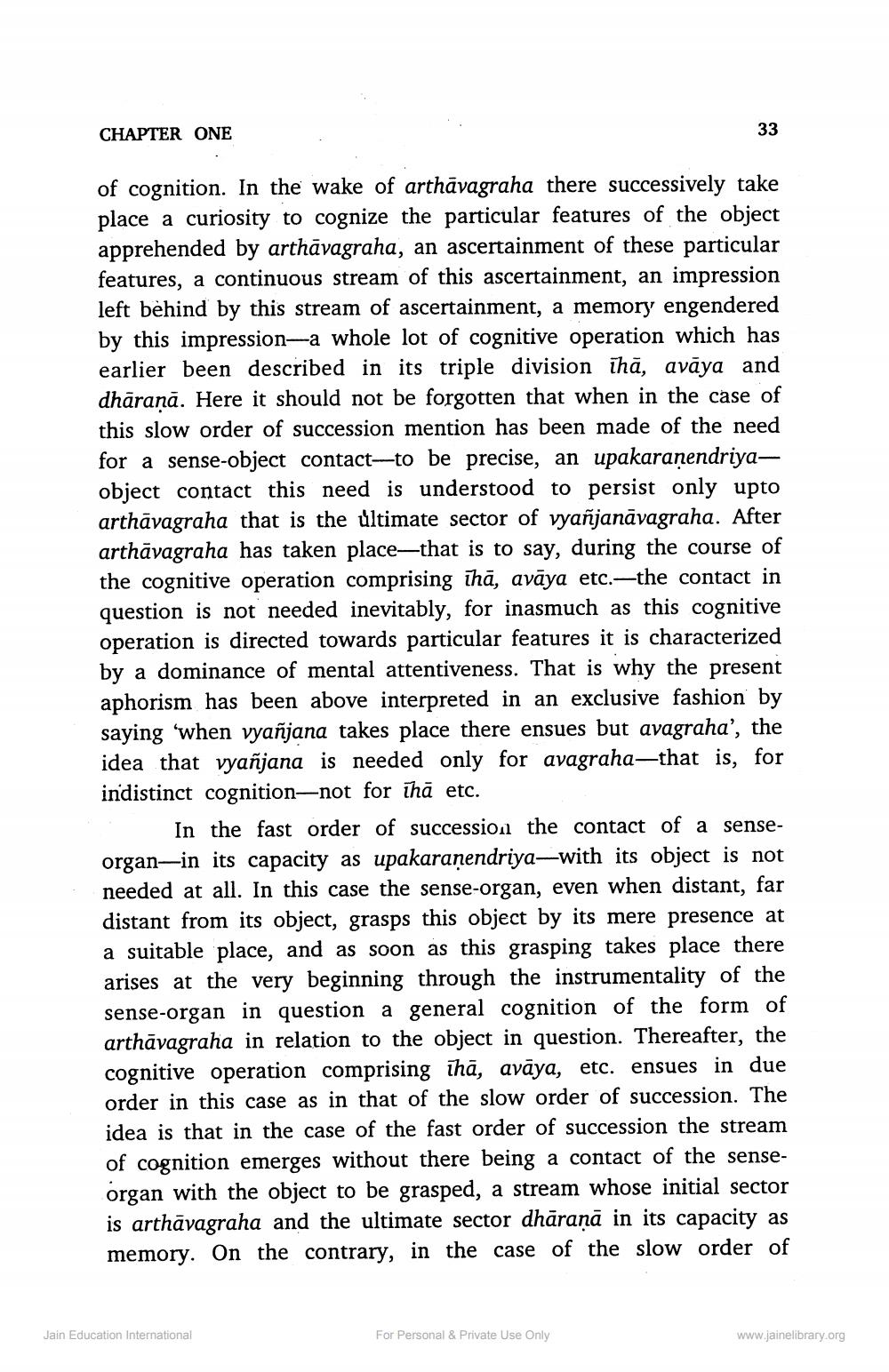________________
CHAPTER ONE
33
of cognition. In the wake of arthāvagraha there successively take place a curiosity to cognize the particular features of the object apprehended by arthāvagraha, an ascertainment of these particular features, a continuous stream of this ascertainment, an impression left behind by this stream of ascertainment, a memory engendered by this impression-a whole lot of cognitive operation which has earlier been described in its triple division īhā, avāya and dhāraṇā. Here it should not be forgotten that when in the case of this slow order of succession mention has been made of the need for a sense-object contact-to be precise, an upakaraṇendriyaobject contact this need is understood to persist only upto arthāvagraha that is the ultimate sector of vyañjanāvagraha. After arthāvagraha has taken place—that is to say, during the course of the cognitive operation comprising thā, avāya etc.—the contact in question is not needed inevitably, for inasmuch as this cognitive operation is directed towards particular features it is characterized by a dominance of mental attentiveness. That is why the present aphorism has been above interpreted in an exclusive fashion by saying 'when vyañjana takes place there ensues but avagraha', the idea that vyañjana is needed only for avagraha—that is, for indistinct cognition—not for thā etc.
In the fast order of succession the contact of a senseorgan—in its capacity as upakaraṇendriya—with its object is not needed at all. In this case the sense-organ, even when distant, far distant from its object, grasps this object by its mere presence at a suitable place, and as soon as this grasping takes place there arises at the very beginning through the instrumentality of the sense-organ in question a general cognition of the form of arthāvagraha in relation to the object in question. Thereafter, the cognitive operation comprising thā, avāya, etc. ensues in due order in this case as in that of the slow order of succession. The idea is that in the case of the fast order of succession the stream of cognition emerges without there being a contact of the senseorgan with the object to be grasped, a stream whose initial sector is arthāvagraha and the ultimate sector dhāraṇā in its capacity as memory. On the contrary, in the case of the slow order of
Jain Education International
For Personal & Private Use Only
www.jainelibrary.org




